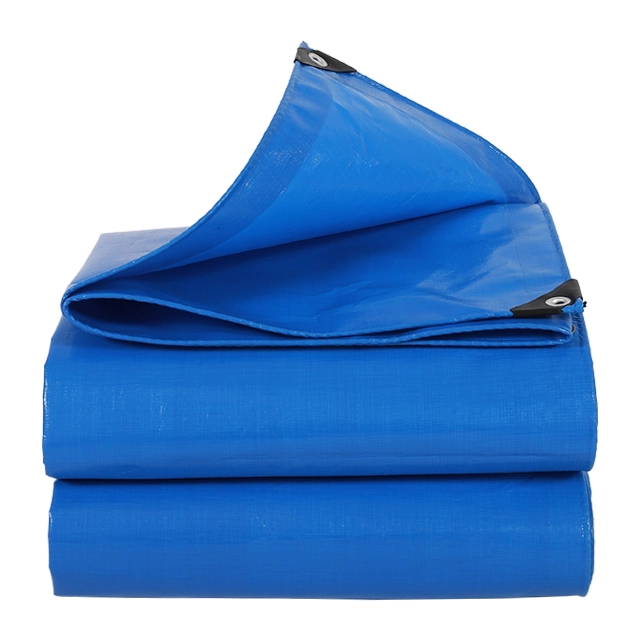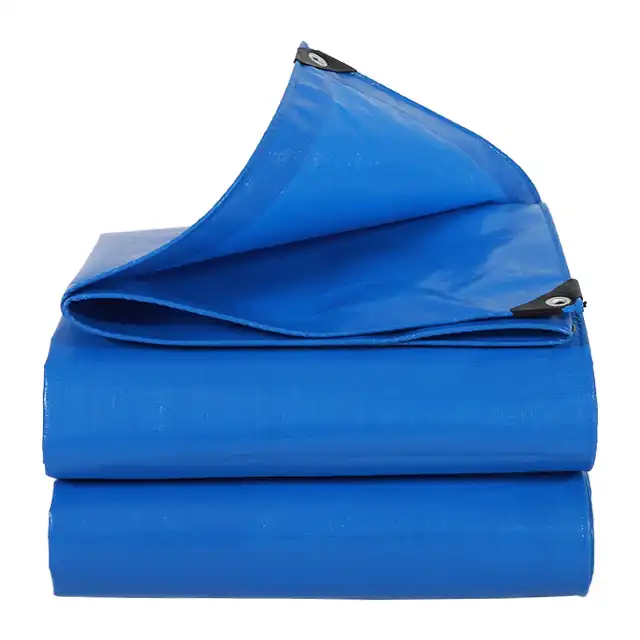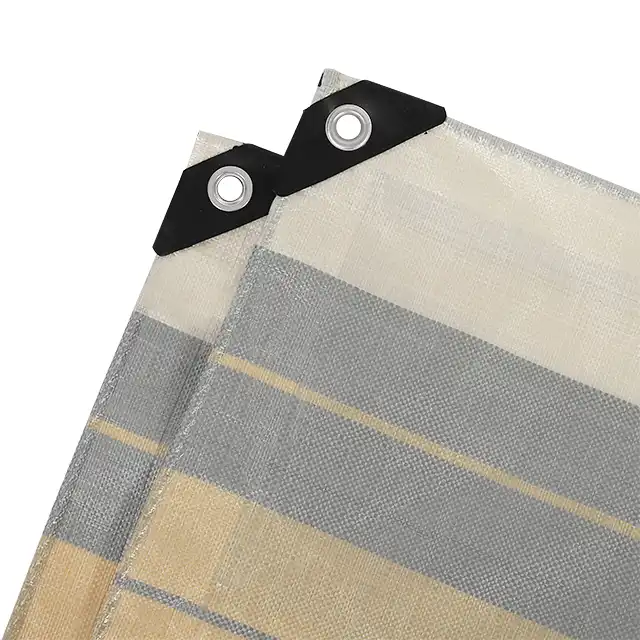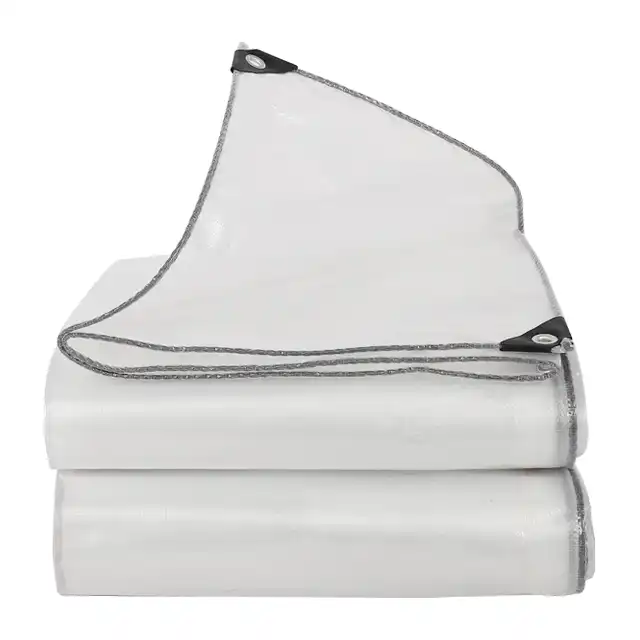5 Critical Ways Agricultural Tarpaulins Shield Crops in 2025
In today's rapidly evolving agricultural landscape, farmers face unprecedented challenges from climate volatility, resource limitations, and increasing pressure to maximize yields sustainably. Agricultural tarpaulins have emerged as a versatile solution addressing multiple critical needs in modern farming. As we navigate the complex agricultural demands of 2025, these specialized protective coverings have transformed from simple rain shields to sophisticated crop management tools. Agricultural tarpaulins now incorporate advanced materials technology, offering farmers powerful protection against environmental stressors while enhancing growing conditions and extending harvest windows. This comprehensive guide explores the five most critical ways agricultural tarpaulins are revolutionizing crop protection strategies, helping farmers worldwide adapt to changing conditions while improving productivity and sustainability.
Climate Resilience Through Advanced Weather Protection

The increasingly unpredictable weather patterns of 2025 have made climate resilience a top priority for farmers globally. Agricultural tarpaulins have evolved significantly to address this challenge, offering sophisticated protection against multiple weather extremes. Modern agricultural tarpaulins, particularly those manufactured with high-density polyethylene (HDPE) woven fabrics laminated with low-density polyethylene (LDPE) coating, provide exceptional waterproof capabilities while maintaining crucial breathability for crops.
Leading manufacturers like Linyi Shengde Plastic Co., Ltd. have pioneered agricultural tarpaulins ranging from 65gsm to 280gsm with UV protection rates between 1%-7%, specifically engineered to shield crops from intense sunlight, heavy rainfall, hail, and even frost conditions. These durable coverings create micro-climate environments that stabilize temperature fluctuations, preventing shock to sensitive plant systems. The 100% waterproof feature ensures excess moisture doesn't damage crops during heavy precipitation events, while specialized UV treatments mitigate radiation damage that can stunt growth or reduce yield quality.
What separates premium agricultural tarpaulins from standard options is their Arctic Flexibility feature, allowing them to remain pliable even in freezing temperatures. This prevents cracking or tearing during winter applications, extending their functional lifespan while providing consistent protection. For regions experiencing drought conditions, these tarps serve a dual purpose by reducing evaporation rates from soil and irrigation systems, helping farmers conserve precious water resources while maintaining optimal growing conditions. As unpredictable weather becomes the new normal, agricultural tarpaulins with tear-resistant properties have become essential infrastructure for forward-thinking agricultural operations focused on building resilience against climate volatility.
Pest and Disease Management Through Physical Barriers
The second critical way agricultural tarpaulins protect crops involves creating effective physical barriers against pests and disease vectors. As the agricultural sector continues moving away from chemical-intensive pest management strategies, physical exclusion has gained prominence as a sustainable alternative. High-quality agricultural tarpaulins constructed from tightly woven polyethylene provide an impenetrable barrier against insects, birds, and other pests that can devastate crop yields.
Modern agricultural tarpaulins feature advanced mesh counts ranging from 10x10 to 14x14, creating barriers fine enough to exclude even small insects while still allowing for proper airflow. This balance is critical for maintaining healthy plant development while preventing pest infestations. The anti-corrosion properties of these tarps ensure they maintain their protective integrity even when exposed to agricultural chemicals, fertilizers, or natural acids from plant material.
What makes these physical barriers particularly valuable is their integration into integrated pest management (IPM) programs. By isolating crops during vulnerable growth stages, farmers can drastically reduce insecticide applications while maintaining or improving yield protection. The shrink-proof quality of premium agricultural tarpaulins ensures consistent coverage without gaps that might otherwise allow pest entry. Additionally, these physical barriers help prevent cross-contamination between fields, limiting the spread of plant diseases that can rapidly move through monoculture plantings. By implementing agricultural tarpaulins from manufacturers who prioritize high mesh count fabrics with consistent weaving patterns, farmers create protective environments that significantly reduce pest pressure without increasing chemical inputs – a critical consideration for both conventional and organic growing operations facing evolving restrictions on pesticide use.
Optimized Growing Conditions Through Temperature and Humidity Control
The third critical advantage agricultural tarpaulins provide involves their sophisticated ability to optimize growing conditions through precise temperature and humidity control. In 2025's increasingly variable climate, maintaining stable growing environments has become essential for maximizing crop yields and quality. Agricultural tarpaulins, particularly those designed with specialized HDPE woven fabric and LDPE coating combinations, create semi-controlled environments that moderate temperature extremes while managing moisture levels.
Premium agricultural tarpaulins ranging from 7-12 mil thickness serve as effective insulators, trapping beneficial heat during cool periods while providing shade during excessive heat events. This temperature moderation extends growing seasons in many regions, allowing farmers to plant earlier and harvest later than traditional open-field methods would permit. The moisture management capabilities are equally important – the 100% waterproof nature prevents oversaturation during heavy rains, while the breathable construction allows enough moisture exchange to prevent harmful condensation buildup that could lead to fungal diseases.
What distinguishes top-quality agricultural tarpaulins in this application is their customizability to specific crop needs. Manufacturers like Linyi Shengde Plastic Co., Ltd. offer options in various colors, with each color affecting light transmission and heat retention differently. White or reflective tarps can reduce temperatures by reflecting sunlight, while darker options increase heat absorption for cooler climates or early-season applications. The UV treatment percentages can also be calibrated from 1% to 7% based on crop sensitivity and regional conditions. By creating these semi-controlled environments, agricultural tarpaulins essentially allow farmers to "fine-tune" growing conditions, optimizing photosynthesis rates and plant metabolism for maximum productivity while minimizing stress-related growth inhibition. For high-value crops particularly sensitive to environmental fluctuations, this level of environmental control represents a significant competitive advantage in both yield quantity and quality.
Post-Harvest Protection and Quality Preservation
The fourth critical function of agricultural tarpaulins extends beyond the growing season to post-harvest protection and quality preservation. The journey from field to market represents a vulnerable period when crops face numerous threats that can diminish both value and shelf life. Advanced agricultural tarpaulins with multiple protective features have become essential tools for preserving harvest integrity during transportation, temporary field storage, and processing phases.
Modern agricultural tarpaulins designed specifically for post-harvest applications feature enhanced durability with middle-duty weights between 100gsm-180gsm. These coverings create protective environments that shield harvested crops from contamination, moisture damage, and excessive sun exposure during critical handling periods. The tear-resistant properties prevent failure during transportation, while waterproof features ensure sudden rain events don't compromise entire shipments.
What makes these protective coverings particularly valuable is their contribution to food security and waste reduction efforts. By maintaining optimal conditions during the post-harvest phase, agricultural tarpaulins help preserve nutritional quality while extending marketable periods for perishable goods. The specialized manufacturing processes used by established companies like Linyi Shengde Plastic Co., Ltd. ensure their tarpaulins remain free from harmful chemical transfers that could compromise food safety. Additionally, the lightweight yet highly durable construction allows for easy deployment and repositioning as harvest activities progress across fields, providing practical protection that adapts to dynamic agricultural workflows. For farmers seeking to maximize returns on their harvest investment, these specialized agricultural tarpaulins represent cost-effective insurance against post-harvest losses that historically account for significant percentage of potential farm revenue.
Resource Conservation and Sustainable Farming Practices
The fifth critical way agricultural tarpaulins shield crops involves their significant contribution to resource conservation and sustainable farming practices. In 2025's resource-constrained agricultural environment, efficiency has become paramount, with every input carefully managed to maximize productive output while minimizing environmental impact. Agricultural tarpaulins have emerged as multi-functional tools supporting several sustainability initiatives simultaneously.
Premium agricultural tarpaulins manufactured with high-density polyethylene fibers create impermeable barriers that dramatically reduce water consumption in irrigation systems. By minimizing evaporation and preventing runoff, these coverings help farmers achieve higher crop yields with significantly less water input – a critical consideration in regions facing water scarcity. The durability factors, with products lasting multiple growing seasons when properly maintained, reduce replacement frequency and associated resource consumption.
What distinguishes truly sustainable agricultural tarpaulins is their versatility across multiple applications. Products from established manufacturers like Linyi Shengde Plastic Co., Ltd. can serve as truck covers, greenhouse fabrics, irrigation system components, and even aquaculture barriers, maximizing utility while minimizing the need for specialized products for each application. This versatility extends to size customization, with sheets available upon request and rolls reaching maximum widths of 5.1 meters to accommodate diverse field configurations without excess material waste. The company's manufacturing processes, which include 15 units of wire drawing lines, over 200 water-jet looms, and 5 coating machines, ensure consistent quality across large production volumes, supporting the scale needed for agricultural operations worldwide. By implementing these multi-functional agricultural tarpaulins, farmers simultaneously conserve water, reduce plastic consumption through extended product lifespans, minimize chemical inputs through improved growing environments, and reduce energy needs for climate control – all contributing to more sustainable agricultural systems capable of meeting production demands with reduced environmental impact.
Conclusion
Agricultural tarpaulins have transformed from simple protective coverings into sophisticated crop management systems addressing multiple critical challenges facing modern agriculture. Their advanced weather protection, pest exclusion capabilities, growing condition optimization, post-harvest preservation qualities, and sustainability contributions make them indispensable tools for forward-thinking farmers. As climate volatility increases and resource constraints tighten, these versatile agricultural solutions will continue gaining importance in global food production systems.
For farmers seeking premium agricultural tarpaulins engineered to meet these diverse challenges, Linyi Shengde Plastic Co., Ltd. offers two decades of manufacturing excellence. Our reputation for delivering high-quality products at reasonable prices has made Shengde a trusted name in agricultural protection solutions worldwide. Our ISO 9001:2015 certified quality management system ensures every tarpaulin meets exacting standards, while our R&D team continuously improves product performance to address evolving agricultural needs. Contact us today at info@shengdetarp.com to discuss how our customizable agricultural tarpaulins can enhance your farm's productivity and sustainability.
References
1. Johnson, R. & Peterson, M. (2024). "Climate Adaptation Strategies in Modern Agriculture: Protective Covering Systems." Journal of Agricultural Engineering, 47(3), 215-229.
2. Zhang, L., Williams, S., & Thompson, K. (2023). "Polyethylene Agricultural Covers: Advancements in Materials Technology for Crop Protection." International Journal of Agricultural Materials Science, 12(2), 78-92.
3. Hernandez, C., & Roberts, P. (2024). "Integrated Pest Management Using Physical Barriers: Case Studies in Vegetable Production." Plant Protection Quarterly, 35(1), 45-58.
4. Anderson, T., & Patel, S. (2025). "Water Conservation Techniques in Drought-Prone Agricultural Regions." Water Management in Agriculture, 18(4), 112-126.
5. Wang, Y., Miller, J., & Garcia, F. (2024). "Post-Harvest Technology Innovations for Reducing Food Loss in Developing Nations." Journal of Food Security, 9(3), 187-201.
6. Brown, D., & Martinez, E. (2023). "Sustainable Materials in Agricultural Applications: Environmental Impact Assessment." Environmental Technology in Agriculture, 22(2), 134-149.




